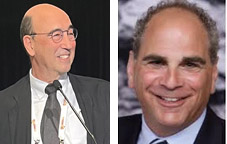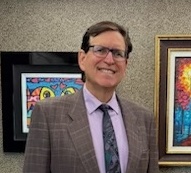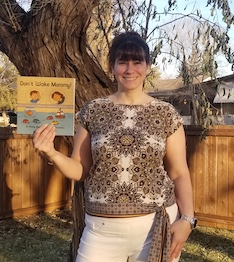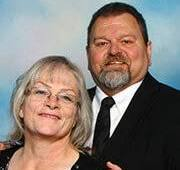Local News
Accolades for internationally-renowned medical researchers

By MYRON LOVE Internationally known heart researcher Dr. Lorrie Kirshenbaum has a new accolade to add to his resume in recognition of his ground-breaking research over the past 30 years and more.

Most recently, Kirshenbaum – the long time Director of the St. Boniface Hospital’s Institute of Cardiovascular Sciences and Professor in the University of Manitoba’s Department of Physiology and Pathophysiology and Pharmacology and Therapeutics – was awarded an Honorary Doctorate in Science degree from the University of Kragujevac in Serbia. Previously, he had bestowed upon him the Heart and Stroke Foundation of Manitoba R.E. Beamish Memorial Award (in 2014), the University of Manitoba’s Distinguished Alumni Professional Achievement Award (2018,) and the Canadian Cardiovascular Society, Research Achievement Award in 2020. Last year, he was inducted into the Order of Manitoba.
He has also been recognized by several international heart research organizations in recent years.
On the late afternoon of Friday, May 3, colleagues, family and friends gathered in the atrium of the Albrechtsen Research Centre at the St. Boniface Hospital complex to celebrate Kirshenbaum’s newest honour.
Several colleagues stepped up to the podium to praise the honoree, among them Dr. Arnold Naimark, Past President of the University of Manitoba. Naimark began his remarks by quoting Winston Churchill’s adage that “no burden is heavier than great potential.”
“I remember Lorrie as a young scientist at the University of Manitoba,’ Naimark commented. “He was always asking questions.
“Not only is he a dedicated researcher, but also he contributes to the scientific community. Many of his students have become leaders in their own right.”
Among others praising Kirshenbaum were: Dr. Ian Dixon, head of the department of physiology and pathophysiology; the Honourable Dr. Rene Cable, Minister of Advanced Education – representing the provincial government; Dr. Jude Uzonna, Vice Dean of Research, Rady Faculty of Health Sciences, University of Manitoba; and Dr. Bram Ramjiawan, Director of Research, Asper Clinical Research Institute, speaking on behalf of Dr. Michael Czubryt, Executive Director of Research. Albrechtsen Research Centre.
“You do what you do, not in the hope of recognition, but because you want to make a difference,” Kirshenbaum noted when it was his turn at the podium. I love doing research and I love teaching.”
He expressed his gratitude to his wife, Dr. Diane Popeski, and his family, as well as the members of his research team. “I have a group of superb researchers who have been with me for a long time. They have done all the heavy lifting.”
He also spoke of the many students that he has taught over the past 30 years. “I am inspired by younger people,” Kirhenbaum said.
He completed his remarks by referring to those who came before him – mentors in cardiology such as Dr. Naranjan Dhalla, founding director of the Institute of Cardiovascular Sciences at the St. Boniface Hospital, and the late Dr. Robert Beamish, the founding director of the Manitoba Heart Foundation.
“I stand on the shoulders of giants,” Kirshenbaum said.
A graduate of the University of Manitoba – with a Ph.D. in Physiology – the son of Mildred and the late Alec Kirshenbaum says that he knew from a very young age that he wanted to devote his life to science and research.
Over the past few years, he and his team of four researchers and 20 workers have been focusing on three specific areas of research into heart health and heart disease. One of those focuses has been a study of the relationship between certain chemotherapy drugs and heart failure. A second area of interest for Kirshenbaum and his researchers has been the effect of night work on the heart and general health of shift workers.
His most recent efforts have been focused on developing a women’s heart research program at the St. Boniface Hospital. Kirshenbaum pointed out in an earlier interview that women suffering from heart disease exhibit different symptoms than men. As a result, heart disease is often undiagnosed in women and undertreated.
“As part of this program, we are trying to recruit a specialist in this area for the St. Boniface Hospital and encourage students at our medical school to consider specializing in this field of medicine,” he noted. “We are striving to develop this dedicated women’s heart health research program with a goal of reducing heart disease and improving quality of life.”

Top liver specialist Dr. Gerald Minuk awarded gold medal by Canadian Association for the Study of the Liver
Dr. Gerald (Yossl) Minuk, Canada’s first liver specialist, and founder of the section of hepatology in the Department of Internal Medicine at the Health Sciences Centre was awarded the Gold Medal by the Canadian Association for the Study of the Liver (CASL) – which he co-founded 22 years ago – at its annual meeting, which was held in Toronto on March 1.
Minuk says that he was overwhelmed by the honour. “I am in very impressive company,” he notes. “Four of the previous Gold Medal recipients were also Nobel Prize winners.”
The son of the late Max and Edith Minuk has had a long and colourful career – a career that has taken him all over the world. Early on, he did locums in Churchill and in St. John’s, Newfoundland. He studied hepatology at the National Institutes of Health in Bethesda, Maryland. In July, 1982, Canada’s first liver specialist was recruited by Foothills Hospital in Calgary. He returned to Winnipeg in 1987 to found the hepatology section here.
I have written previous stories about Yossl describing a two-week stay teaching in China about 35 years ago – and a later invitation to share his expertise in the oil-rich Arab Kingdom of Qatar where the authorities want ed to hire him despite his being an openly Orthodox Jew.
His 42-year career has encompassed clinical research, ministering to patients, publishing more than 300 research papers, and teaching. He notes that, over the years, he has taught up to 200 students – many of whom have gone forward to start their own liver programs across Canada.
Although Minuk retired two years ago, he continues to work on what was his final research project – a $2.1 million, five-year study to try to determine why Indigenous Canadians suffer from liver disease at a much higher rate than the overall Canadian population.
Anyone who knows Yossl also knows that his principal passion beyond his career has been the House of Ashkenazie, the last of the old North End shuls. He has been a mainstay of the old shul for decades – often recruiting medical colleagues and students to join him at shul for morning minyans. In recent times, morning minyans at the Ashkenazie have declined to Thursday mornings only – but Yossl Minuk hopes to keep the old building going by turning it into a museum – for which he is still seeking funding.
In the meantime, he continues to attend twice daily minyans at the Lubavitch Centre.
Local News
Community leader Sheldon Zamick role model of perseverance despite life’s vicissitudes

By MYRON LOVE For Sheldon Zamick, life is a marathon, not a sprint – and there is always more to learn. In a life marked by struggles, he has overcome adversity and written a story of success both in business and community leadership.
Over the years, he has given of his time and experience to a great variety of charitable organization – including the Jewish Federation, the CJA, the JNF, Canadian Associates of Ben-Gurion University of the Negev, the Canadian Magen David Adom, the Shaarey Zedek Synagogue (he is currently the Board’s finance chair), the Canadian Museum for Human Rights, Mount Carmel Clinic, the Variety Club, Muscular Dystrophy, Habitat for Humanity, Siloam Mission, and the Canadian Institute for the Blind. The most recent charitable organization that has benefited from his leadership has been the Lake Winnipeg Research Consortium.
He took on his most recent challenge as executive director of the Lake Winnipeg Research Consortium last year after stepping away from a 40-year career in real estate sales. “This is a really big responsibility,” he says of taking the helm of the LWRC.
As noted on the LWRC webpage, the organization was founded in 1998 “to facilitate scientific research on Lake Winnipeg following evidence of water quality deterioration related to the 1997 Red River ‘Flood of the Century’. The LWRC was incorporated in Manitoba in 2001 and received charitable status in 2008”.
“Our organization does vital research in regard to Lake Winnipeg,” Zamick points out. “Our 328-ton, 110-foot-long ship, the MV Namao – which celebrated its 50th birthday this past August (during which over 1200 supporters toured the boat) in Gimli – is out regularly in the spring, summer and fall on Lake Winnipeg taking water samples. We provide the research platform for scientists to conduct research with regard to climate change and the state of the lake and fish population. We offer science education year round, group tours and summer camp programs for kids.”
He adds that the consortium works closely with many stakeholders, including the Universities of Manitoba and Winnipeg, and receives funding from the Winnipeg Foundation, the Canada Water Agency, Manitoba Hydro, the Manitoba Government, the City of Winnipeg, the town of Gimli, other municipalities and many individual donors.
“It has been great getting the opportunity to meet with various government officials, research partners and donors,” he says.
Sheldon Zamick is a role model demonstrating that an individual growing up in humble surroundings and having to deal with adverse circumstances can succeed in life. He recalls how he had to go to work early in life – at the age of 12 – to help support his family. “We moved around a lot when I was growing up in the North End because my parents could never afford to buy their own home,” he recounts. “That is what drew me to a career in real estate.”
His first job, he says, was peeling potatoes in the basement at Kelekis (a long gone North End Winnipeg restaurant which those of us of a certain age still fondly remember). “I had to learn at an early age to be self-sufficient,” he notes.
In his university days, he worked part time as a corrrections officer – taking as many shifts he could get – at the Winnipeg Remand Centre.
He also demonstrated his leadership capacity at an early age. At 17, he served as president of the USY chapter at the former Rosh Pina Synagogue (even though his parents couldn’t afford to be members of the shul).
After graduating from the University of Manitoba with degrees in Economics and Psychology, he founded TV Facts Magazine, a free weekly TV and shopping guide which some readers may remember. “TV Facts was part of an international chain of publications,” he recounts. “I had to travel to New York to learn how to run a magazine. At our peak, we were putting out 50,000 copies a week – which were available in over 500 locations.”
It was in 1985 that Zamick pursued his interest in becoming a realtor – a profession in which he excelled. Over 40 years as a realtor, he received numerous sales awards, also recognition for his leadership role in his profession and his numerous contributions to the wider community. In the former field, he served for five years as a member of the Winnipeg Real Estate Board, including a term as treasurer and chairing the Government Relations committee.
In 2013-14, he was elected as a director of the 120,000-member Canadian Real Estate Association.
Zamick was recruited into volunteering in the Jewish community, he notes, in the mid-1980s by Laurie Goldberg and the late Larry Rosenberg, who were co-chairs of the Federation’s Young Adult Division. Sheldon subsequently served as co-chair –with Sid Halpern – of the 1987-88 Combined Jewish Appeal’s New Gifts Division.
“We were responsible for contacting members of the community who hadn’t given for a long time,” he explains. “We were really successful in persuading many of them to contribute to the campaign and (by extension) the community.”
That year, he and current outgoing Federation president Paula Parks were nominated to receive our community’s Young Leadership award. Zamick was presented with the Harry Silverberg Young Leader of Distinction Award by Nora Kaufman, the late Harry Silverberg’s daughter.
He later served as the CJA’s campaign director from 1989 to 1992. “During the 1989-90 campaign – that included Operation Exodus (aimed to help Jews leave the dying Soviet Union) – we raised an extra $2 million- bringing in a total of $6-million that year.”
In 1992, Zamick was afflicted with a condition that might have derailed a lesser individual. He was diagnosed with Retinitis Pigmentosa, a condition that left him legally blind. The ever resilient Zamick however took the diagnosis in stride. In 2022, he told an online publication called “Slideshare” that, after the diagnosis, he chose to be thankful for what he had rather than focus on what he had lost.
He added that while legally blind, he still has some sight in certain lighting. “It is a unique way to live,” he told Slideshare, “but you have to adapt to it and I haven’t let it stop me.”
He has been helped immensely by his longtime, supportive wife, Florence.
Typically, following his diagnosis, he threw himself into volunteering with the Canadian National Institute of the Blind. He served on the board of the CNIB for 16 years and was a leader in raising the funds one year – when the CNIB was facing government cutbacks.
Zamick is planning to retire from his current position at the end of this month. He says that he and Florence are looking forward to spending more time with family and friends, travelling –a pasttime they both enjoy, and getting together with their children – Natalie in Toronto and Steven and his wife Ally, along with granddaughters Isabella and Mikayla in Montreal.
He is however, still open to new possibilities. “You never know who might call next,” he observes.
Local News
Local author Avra Love (yes, my daughter) scores three book deal with new Jersey-based Scribal Scion Publishing

By MYRON LOVE Avra Love’s first children’s book has just been released. “Don’t Wake Mommy! A Story About Honouring Parents” is part of a three-book deal that Avra signed with James Gershfield, the president of New Jersey-based Scribal Scion Publishing. The book focuses on Aaron, a Jewish little boy who loves his parents dearly and is always trying to please them.
In “Don’t Wake Mommy!”, Aaron is trying to be considerate of his mommy, who is trying to get some sleep. So, when he discovers water leaking in the basement, he tries to deal with the problem himself – without having to wake his mother – with predictable results.
“Don’t Wake Mommy!” is Avra’s second published book. She published her first, a book of short stories called “Into the Junk Drawer and Other Stories” on Amazon in the spring of 2022. The book sold well – around 250 copies and received very positive comments from many of its readers.
“I have been writing for as long as i can remember,” she comments. “Over the years, I have dabbled in prose and poetry, short stories and longer pieces.”
She began writing the stories that make up “Into the Junk Drawer” shortly after giving birth to her son, Ares, in late 2021. The book consists of a collection of 35 stories – each two to three pages long and each with a moral or a twist at the end.
She became aware of James Gershfield in the summer of 2024 after I wrote a couple of stories about him in the Jewish Post about biographies he had written about his parents, former Winnipeggers Rabbi Edward and Toby Gershfield. His mother was a granddaughter of the late revered Rabbi Israel Kahanovitch.
James Gershfield published both books through Scribal Scion Publishing, which he founded two years after retiring from a 40-year career as a software developer. Scribal Scion Publishing focuses on Jewish books that inspire and comfort. Genres include memoir, biography, religion, and comfort for mourners, as well as children’s books.
In a comment to Avra, Gershfield wrote that “I think you have a great talent for coming up with fun stories for kids – stories that also teach some valuable lessons”.
Avra reports that she wrote the draft of “Don’t Wake Mommy!” several years ago. “Working with James, I learned a lot about the unique features of writing children’s stories. While the process (of publishing) took longer than I expected, I am very happy with the final result.”
She notes that the second book in the series – “Taking Care of Mommy” – should be out next year and the third ,‘”Aaron’s Buried Treasure” – the year after that. In the meantime, she has another group of short stories almost ready for publication and is working on a Chanukah craft fair murder mystery.
“Don’t Wake Mommy!” is available online at Amazon or you can call 204 334-4961 to get your copy.
Local News
Lifelong friend of Israel and the Jewish people John Plantz is the epitome of humility

By MYRON LOVE In the Torah, the prophet Micah, asks the question: “O man. What does the Lord require of you?” to which the Lord responds: “to act justly and to love mercy and to walk humbly with your God.”
John Plantz tries to live those precepts every day. Though recently retired as the Christian Friends of Israel’s director, the lifelong supporter of Israel and our local Jewish community has been and remains actively involved as a volunteer in several of our institutions, among them Canadian Magen David Adom, Friends of JNF Canada, Canadian Associates of Ben-Gurion University of the Negev, Canadian Friends of Haifa University, Leket Canada, Operation Lifeshield, and the Jewish Foundation of Manitoba. (He and his wife, Irene, were Endowment Book of life singers a few years back.)
I first met John Plantz more than 25 years ago when I joined the board of the old Jewish Public Library; he was the volunteer librarian back then – and he told me his story.
His first encounters with Jews came while he was growing up near the former Jewish farm colony at Camper – about a two hour drive northwest of Winnipeg. “It was one of the Baron Hirsch farm colonies,” he recalled. (Hirsch started several Jewish farm colonies in Western Canada and Argentina in the late 19th and early 20th centuries.) When I was a kid, there were still a lot of Jewish families in the area.”
Post high school Plantz found himself adrift – unsure of what he wanted to do with his life. He worked in construction for a time, tried joining the RCMP (but they weren’t taking on any new recruits at that time) – and contemplated going to university. He also thought about playing professional baseball.
Then he heard about an evangelical bible school – Briercrest College and Seminary – in west central Saskatchewan, and applied for admission. He says that he was initially attracted to the institution because of its sports program. However, he also found himself becoming increasingly interested in the Bible and became a devout Christian. His experience at Briercrest further fostered his passion for Israel.
In 1979, he graduated with a Bachelor of Religious Education and a teaching certificate. In 1983, John married Irene Plett. He recalls that, at the reception, he suddenly leaned over to his new bride and said, “One day, I’m going to Israel.”
From 1978 to1988, he worked as a youth pastor and as a “circuit preacher” in northern Manitoba and Saskatchewan. In 1989 he decided to go back to school, to attend Briercrest Seminary to obtain his Masters of Ministry with studies in archaeology in Israel.
“As I studied the Bible more intently,” he recalls, “one of my professors suggested that if I really wanted to understand the Bible better, I should hear it taught from a Jewish perspective.”
To that end, in 1991, he began attending the Beth Jacob Synagogue in Regina. He went to Shabbat services regularly for a year and became friendly with the rabbi. One day, after Shabbat service, the Rabbi asked him if he was Jewish because he had a Jewish friend with the same last name.
“My plans to visit Israel were already in the works,” he says, “and so I tucked this away as something I should pursue while there.”
In Israel that first time – the first of many visits to Israel – 28 at last count – he took archaeology courses at the Hebrew University and went on some digs. He also looked into his surname and found that it was a Hungarian Jewish name.
When he returned to Canada, he asked his grandfather, Ralph Plantz, whether he was, in fact, Jewish, his grandfather acknowledged that he did have Jewish ancestry. When John asked why his grandfather had never mentioned it before, the response was that no one asked.
“My ‘zaida’ (which is how John now refers to his late grandfather) always encouraged us to treat Jewish people with respect,” John notes.
While still a devoted Christian, he says that he does consider himself Jewish.
After coming back from Israel that first time John began volunteering with Christian Friends of Israel. He also began volunteering at the old Jewish Public Library.
“I loved being at the library,” he reminisces. “I had studied both Hebrew and Yiddish so I could work comfortably with the collection.”
He speaks fondly about some of the regulars who visited the library. “I learned a lot from them,” he says.
He remembers the late Noach Witman in particular. “Noach was one of the kindest men I have ever known,” he says.
(Witman was the founder and long time host of the Jewish radio hour Sunday afternoons – which is still on the air every Sunday from 1:30 to 2:30 on CHJS radio 810 on the am dial.)
During that time, Plantz began to attend north Winnipeg synagogues on Shabbat and volunteer for a number of Winnipeg-based Israel fundraising organizations.
In 2018, he assumed the role of Manitoba Director of Christian Friends of Israel, a position he just retired from at the end of August. He declares however, that he will continue to work on behalf of Israel and the Jewish people as long as he is able.
He is proud to report that his seven children all share his and Irene’s passion for the Children of Israel and all helped out at the Jewish Public Library. “All five of my sons took Yiddish lessons and one of my daughters studied Hebrew,” he says.
Plantz quotes the Prophet Jeremiah as declaring that – to paraphrase – as long as the sun, the moon and the stars are in the sky, “the seed of Israel shall not cease from being a nation before me”.
“And so must be our love for the Jewish People and Israel,” Plantz concludes.


